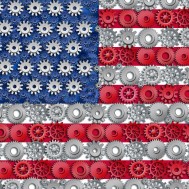Throughout the past several decades, manufacturers have moved their factories to other countries with lower labor costs, cheaper resources and fewer government regulations. In fact, U.S. lost roughly 2.4 million manufacturing jobs to China alone from 2001 to 2013.
Recently, though, we’ve witnessed a reverse in this trend as companies bring their manufacturing facilities back to America, building new plants on U.S. soil and making sustainable use of domestic resources.
To help manufacturers understand reshoring and decide if it’s the right move for their business, we broke down six important facts worth considering.
1. Reshoring simplifies logistics.
When companies produce products or components abroad, they face a lot of long-distance obstacles. Some of these include:
- Communication issues. When manufacturers work with people in other countries, they have to deal with time differences, language barriers and cultural norms — all which make it harder to effectively communicate. Reshoring eliminates this, since business is performed within one country.
- Different laws. Most managers are familiar with American business laws, but outsourcing production into another country means complying with a whole different set of rules and regulations. It also makes it more difficult to protect intellectual property laws, since those are enforces as strictly abroad. Bringing production back to the U.S. leaves everyone on the same page.
- Unnecessary costs. A lot of issues can arise when shipping items globally — so it becomes a lot less complicated when the product has to travel shorter distances. Shipment delays aren’t as frequent, goods have less opportunities to be damaged and production managers avoid costly trips overseas.
2. Reshoring will fuel research and development.
The cornerstone of American success is the strive for creativity. Without it, the country will fall behind to competing nations. Going forward, American manufacturing will have a focus on digital technologies, automation and other software development.
In order to hold this position as a top world leader in innovation, American businesses need to keep that research and development at home, where they can oversee it and be directly involved.
The government acknowledges this, which is why there are even research and development tax credits, employee trainings and other assistance for eligible manufacturers.
3. Eight out of 10 consumers prefer American-made products.
In addition, more than 60 percent say they’re even willing to pay 10 percent more for it. Here are some of the reasons why:
- More American jobs. As it turns out, total output from American manufacturing is back to pre-recession levels — and of these almost half a million new jobs, 15 percent are a result of reshoring alone.
- High-quality products. While many foreign countries have no hard regulations at all, America has established many groups — such as the Departments of Commerce and Agriculture and the U.S. Food and Drug Administration — for the sole purpose of ensuring consumers are safe.
- Better standards. Human labor laws are not universal. When consumers buy American-made products, they have the satisfaction of knowing the people who made them worked in safe conditions, were paid well and were treated fairly.
4. Reshoring results in lower costs.
Decades ago, the biggest motive behind America’s decision to outsource manufacturing was cost. However, that’s no longer the case. Today, the wage gap between Chinese and American workers has significantly decreased. And, it turns out a worker in the U.S. is associated with 10 to 12 times the output of a Chinese worker. America’s advanced infrastructure and high investments in automation, education and information technology leaves workers at an advantage.
Another factor is cheaper American energy costs. The Boston Consulting Group found that American manufacturers spend an average of only 2 percent of costs on natural gas in addition to 1 percent for electricity, in comparison to other major manufacturers in countries like China who must spend an average of 6 percent of costs on energy for manufacturing.
5. Reshoring benefits the environment.
In a day and age where companies are expected to uphold a certain level of corporate social responsibility, environmental impact is a top priority. Eighty-three percent of industrial manufacturing CEOs plan on making changes to minimize the social and environmental impacts of their supply chain.
Factories abroad, such as those in China and India, have weaker or nonexistent environmental regulations, and in response have contributed to enormous pressures on the planet’s environment. Reshoring is a huge part of sustainability in manufacturing — helping to decrease ocean acidification, toxic chemical dumping and atmospheric carbon dumping.
6. Reshoring brings end products closer to customers.
Proximity to customers is one of the top three factors cited as driving future decisions on production locations. This makes sense, since manufacturing leaders require a supply chain that optimized the flow of goods.
Since customers’ habits are changing constantly, it’s more logical to place factories closer to customers. This way, manufacturers can quickly make adjustments based on shifts in consumer demand (all resulting in a leaner, shorter supply chain).
Not only will this flexibility mean that products can reach customers sooner, but it allows for more collaboration between marketing and engineering teams — ultimately resulting in a better product.
Reshoring in manufacturing: What’s next?
What reshoring trends do you think manufacturing will see in 2017? What are some of the reasons your business has considered joining the trend? We’d like to hear. Let us know on Twitter @AppleRubber.
